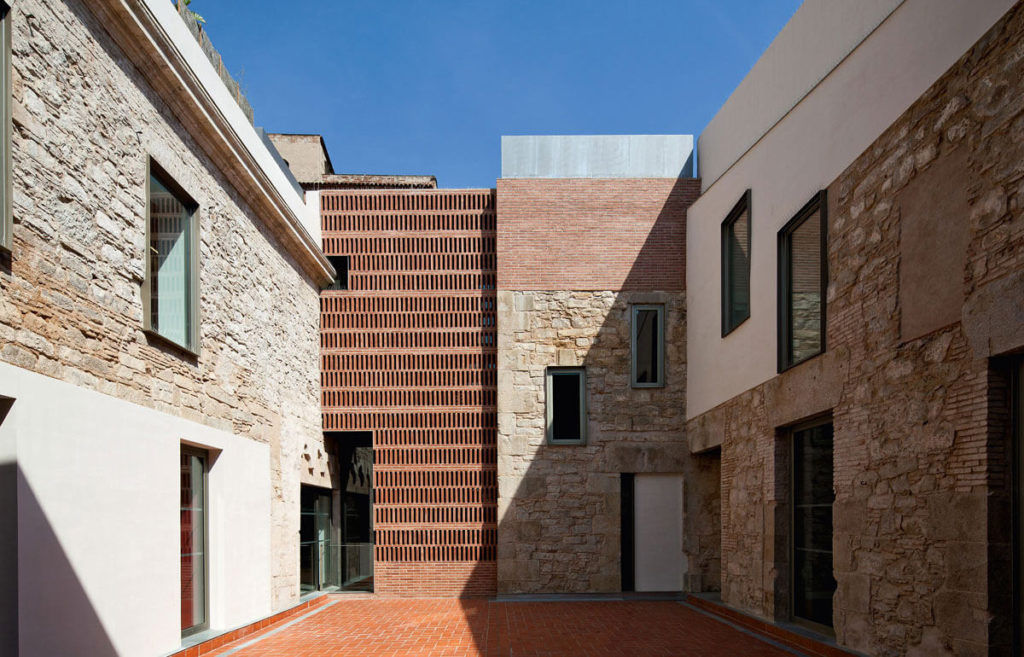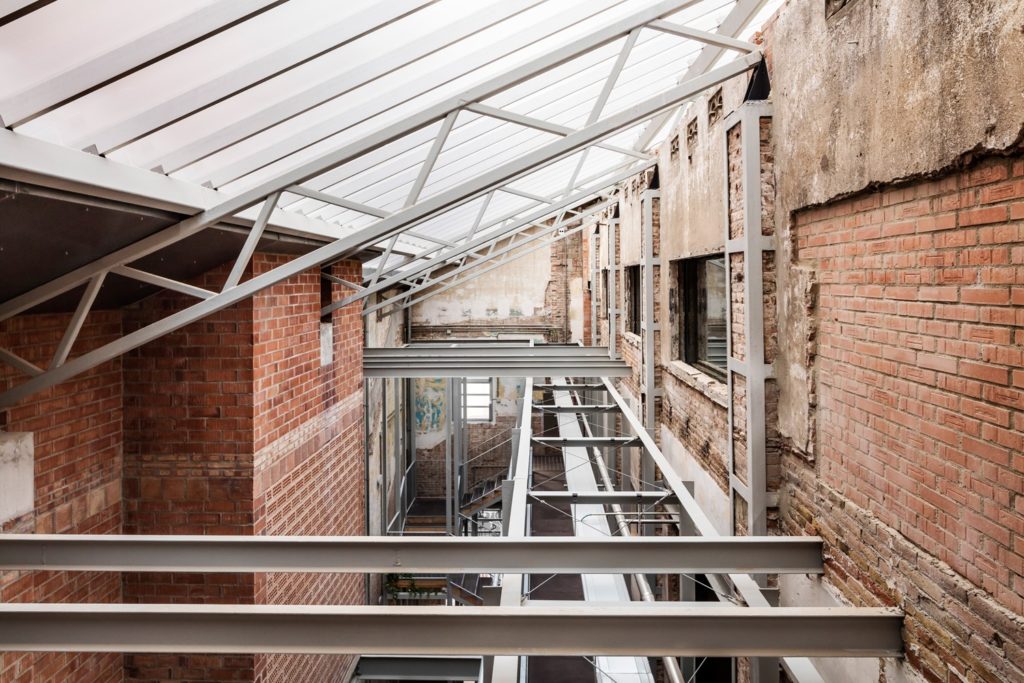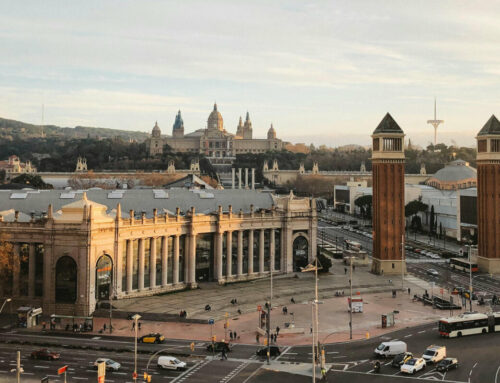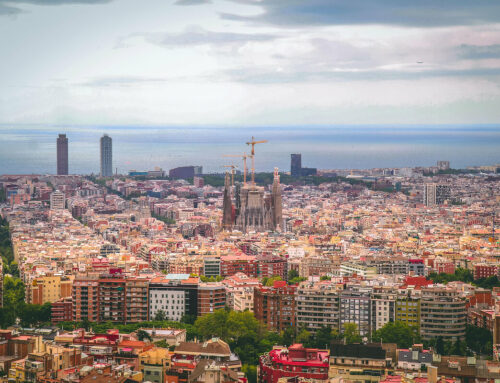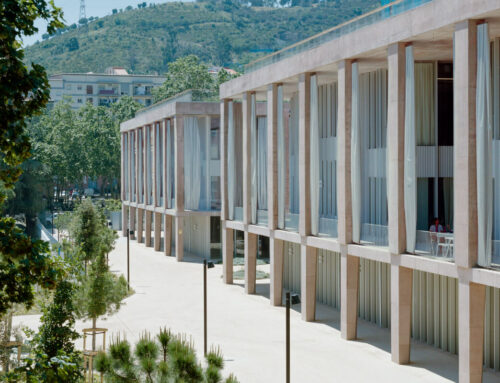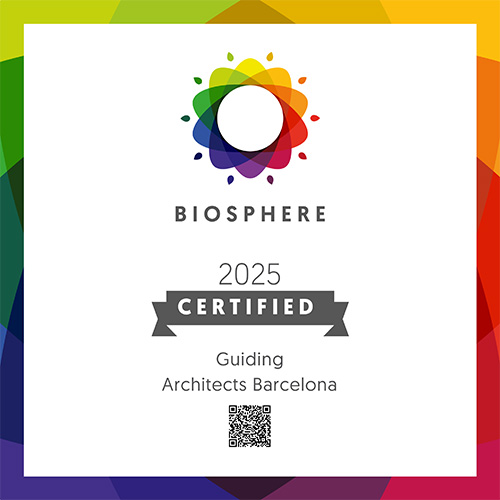Sustainable Urbanism
There is no commonly agreed upon definition of what we mean by „sustainability“. There are many different interpretations of what it is and how it can be put into practice. Over the past years, though, cities like Barcelona have come up with a variety of smart green city initiatives and clearly showed what successful regional policy might look like. Barcelona’s ambitious Municipal Action Plan 2012-15 envisions „a city that is self-sufficient, renaturalised, with productive districts and that moves at a human pace, set in the heart of a hyper-connected metropolitan area with zero emissions.“
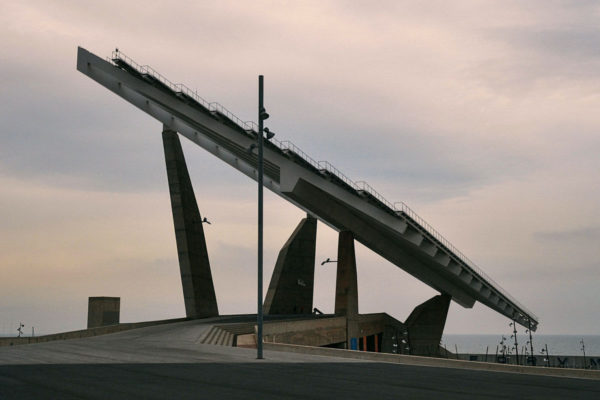
Pèrgola Fotovoltaica del Fòrum, © Sergi Dolcet Escrig on Unsplash
Sun City
In 2000, Barcelona became the first European city to have a solar thermal ordinance, which by now requires all new buildings and those undergoing renovation to generate at least 60 percent of hot water using solar heaters. In 2004, the city built one of Europe’s largest urban solar arrays as part of the Barcelona Forum, a major waterfront redevelopment at the far end of the Diagonal avenue, and as just another element of a much larger hybridized infrastructure project which also includes a water treatment facility and a garbage incinerating plant. Designed by architects José Antonio Martínez Lapeña and Elías Torres as a giant canopy overlooking the sea, it has become a symbol of the city’s ecological commitment.
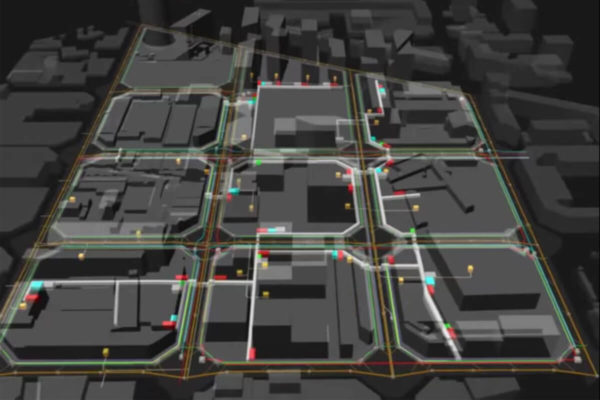
Pla Especial d’Infraestructures del 22@, © Barcelona Media
Underground City
Cerdà showed that the most efficient network in urban fabrics is an orthogonal one. Even some hundred fifty years later, the street pattern laid out in his extension plan for Barcelona is most up to date and proves to be extremely versatile when it comes to the implementation of smart technologies. The Special Infrastructure Plan allowed for retrofitting 37 kilometers of existing streets in Barcelona’s new innovation district 22@ with a system of underground service galleries that enables fibre-optic telecommunications, electricity, district heating and cooling as well as pneumatic waste collection networks to be easily installed and maintained.
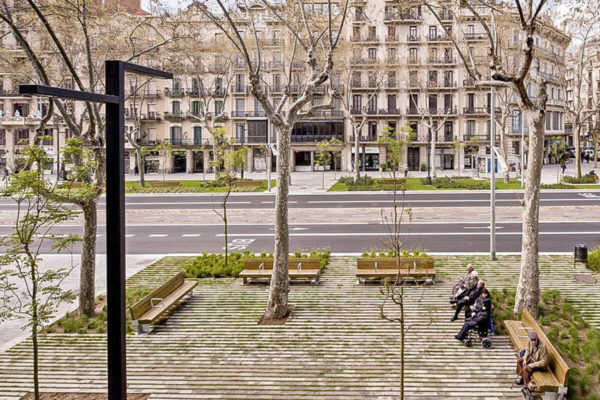
Passeig Sant Joan, © Adriá Goula
Green City
The public space is a vital element of the Mediterranean city. Urban parks and spaces can be the future green engines of a more sustainable urban environment. Lola Domènech’s remodelling of boulevard Sant Joan that has just been inaugurated is only one feature of Barcelona’s ambitious Green Infrastructure and Biodiversity Plan that aims at establishing a network of urban green corridors running the city from the Collserola mountain range to the sea, serving both environmental and social functions, as well as renaturalising the city. The architect’s main task was to retrieve Passeig de Sant Joan’s historical value as one of Barcelona’s major boulevards, giving priority to its pedestrian and recreational use, while also addressing key aspects of biodiversity and sustainability.
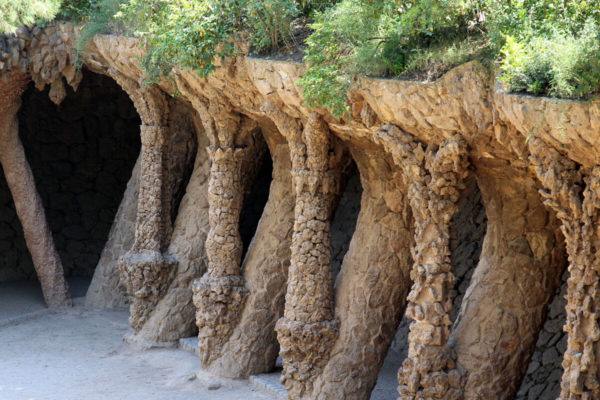
Park Güell, © Fred Romero, licensed under CC BY 2.0
Self-Sufficient City
Sustainability may be a global trend nowadays, but people have been using green building techniques for centuries. In Barcelona, Antoni Gaudí’s work is an inspirational example of environmental design. Back in 1900, Gaudí designed his emblematic Park Güell to be an upscale self-sustaining neighbourhood for 60 families. The project was intended to have its own water and electricity supply, public squares, gardens, a church, and a market, but it was never finished and opened as a public park instead. Today, most of the visitors ignore one of Park Güell’s most interesting features: the existence of an intricate water-management system laid out to reduce soil erosion as well as to collect water for irrigation and general use, which seems to be more topical than ever.
Sustainable Urbanism
There is no commonly agreed upon definition of what we mean by „sustainability“. There are many different interpretations of what it is and how it can be put into practice. Over the past years, though, cities like Barcelona have come up with a variety of smart green city initiatives and clearly showed what successful regional policy might look like. Barcelona’s ambitious Municipal Action Plan 2012-15 envisions „a city that is self-sufficient, renaturalised, with productive districts and that moves at a human pace, set in the heart of a hyper-connected metropolitan area with zero emissions.“

Pèrgola Fotovoltaica del Fòrum, © Sergi Dolcet Escrig on Unsplash
Sun City
In 2000, Barcelona became the first European city to have a solar thermal ordinance, which by now requires all new buildings and those undergoing renovation to generate at least 60 percent of hot water using solar heaters. In 2004, the city built one of Europe’s largest urban solar arrays as part of the Barcelona Forum, a major waterfront redevelopment at the far end of the Diagonal avenue, and as just another element of a much larger hybridized infrastructure project which also includes a water treatment facility and a garbage incinerating plant. Designed by architects José Antonio Martínez Lapeña and Elías Torres as a giant canopy overlooking the sea, it has become a symbol of the city’s ecological commitment.

Pla Especial d’Infraestructures del 22@, © Barcelona Media
Underground City
Cerdà showed that the most efficient network in urban fabrics is an orthogonal one. Even some hundred fifty years later, the street pattern laid out in his extension plan for Barcelona is most up to date and proves to be extremely versatile when it comes to the implementation of smart technologies. The Special Infrastructure Plan allowed for retrofitting 37 kilometers of existing streets in Barcelona’s new innovation district 22@ with a system of underground service galleries that enables fibre-optic telecommunications, electricity, district heating and cooling as well as pneumatic waste collection networks to be easily installed and maintained.

Passeig Sant Joan, © Adriá Goula
Green City
The public space is a vital element of the Mediterranean city. Urban parks and spaces can be the future green engines of a more sustainable urban environment. Lola Domènech’s remodelling of boulevard Sant Joan that has just been inaugurated is only one feature of Barcelona’s ambitious Green Infrastructure and Biodiversity Plan that aims at establishing a network of urban green corridors running the city from the Collserola mountain range to the sea, serving both environmental and social functions, as well as renaturalising the city. The architect’s main task was to retrieve Passeig de Sant Joan’s historical value as one of Barcelona’s major boulevards, giving priority to its pedestrian and recreational use, while also addressing key aspects of biodiversity and sustainability.

Park Güell, © Fred Romero, licensed under CC BY 2.0
Self-Sufficient City
Sustainability may be a global trend nowadays, but people have been using green building techniques for centuries. In Barcelona, Antoni Gaudí’s work is an inspirational example of environmental design. Back in 1900, Gaudí designed his emblematic Park Güell to be an upscale self-sustaining neighbourhood for 60 families. The project was intended to have its own water and electricity supply, public squares, gardens, a church, and a market, but it was never finished and opened as a public park instead. Today, most of the visitors ignore one of Park Güell’s most interesting features: the existence of an intricate water-management system laid out to reduce soil erosion as well as to collect water for irrigation and general use, which seems to be more topical than ever.




